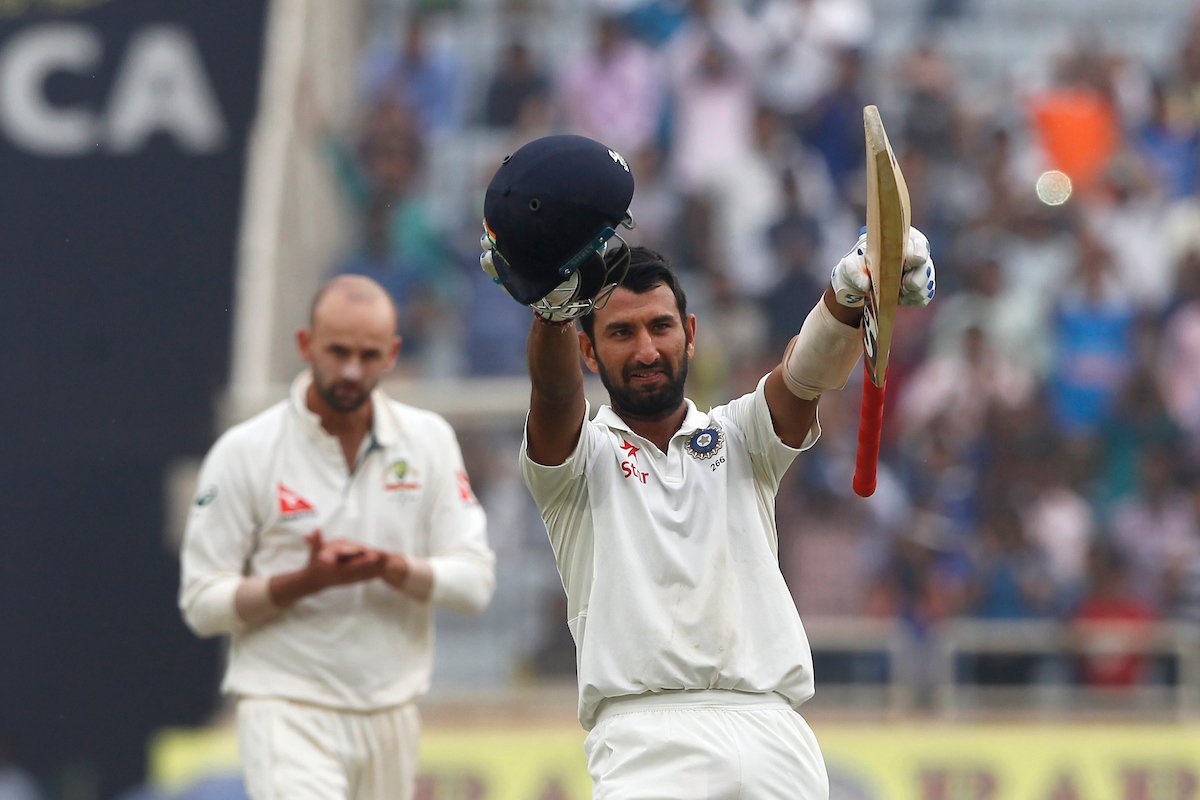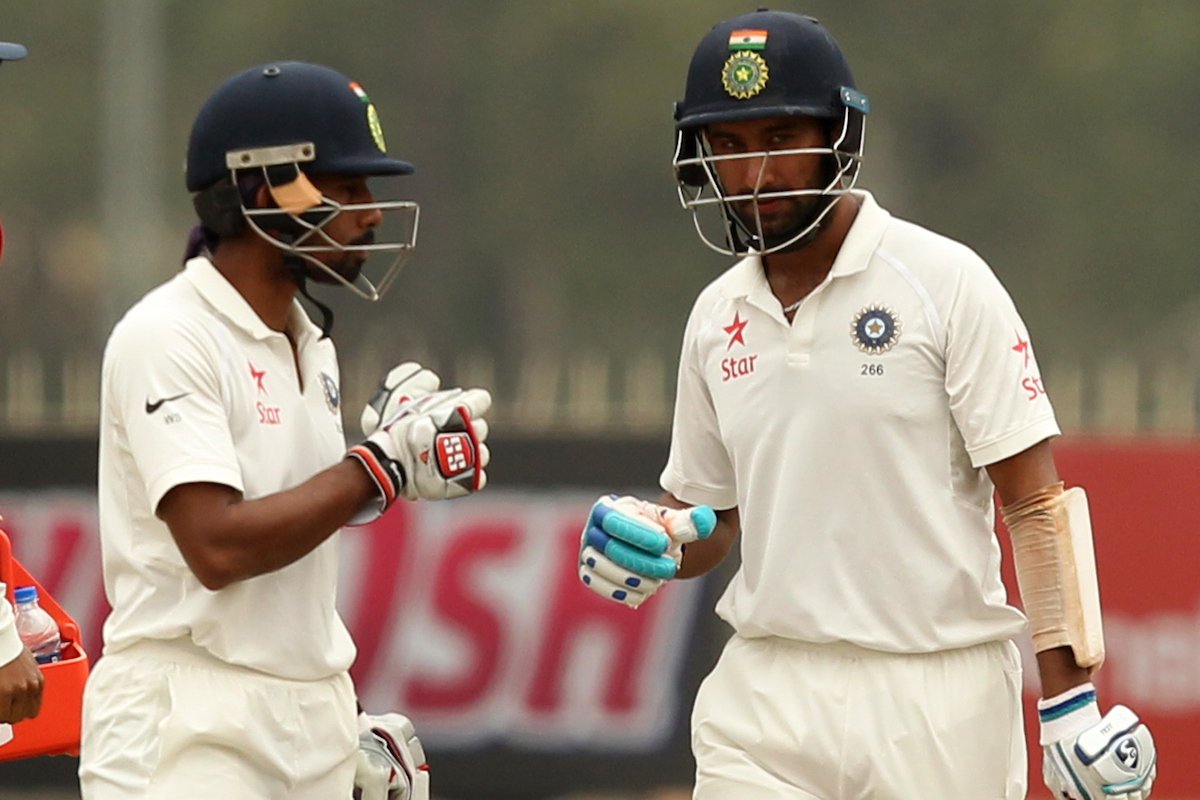Zen.
It’s nearly impossible to describe an innings that lasted nearly 670 minutes in one word but Cheteshwar Pujara was the personification of zen in Ranchi.
Never before in Indian cricket history has a batsman faced more than 495 balls. Pujara faced 525. That’s more than what the entire team managed in the two innings combined in the first Test in Pune. That’s 87.3 overs — almost an entire day’s play. It would be an understatement to say he was disciplined. It would be an over-simplification to say he displayed control. This was no ordinary innings. This was, arguably, nothing like any Indian cricket fan has seen in modern times.

When Pujara came out to bat, India were still 360 runs behind Australia’s first innings total. When he finally decided to play a loose shot, 525 balls later, India were 76 runs ahead. He started like he always does — patient, watchful. He then accelerated like he always does — scoring boundaries at will. His first 52 runs came in 155 balls, his next 48 runs in 59 balls. Till then it was a typical Pujara innings.
Pujara first 120 balls: 28 runs (RR: 1.39)
Pujara next 100 balls: 77 runs (RR: 4.62)Pujara next 108 balls: 25 runs (RR: 1.38)#IndvAus— Freddie Wilde (@fwildecricket) March 18, 2017
But as he was laying the foundation at one end, he kept losing partners at the other. That’s when he hit the reset button and re-focussed, intent to take India close to Australia’s total. He went into meditation. The rapidly increasing strike rate plateaued as he scored the second half of his 202 runs in 315 balls.
Murali Vijay had succumbed to the temptation of attacking just before lunch on day two. Virat Kohli had succumbed to the temptation of making a statement when Australia took the second new ball. Ajinkya Rahane had succumbed to the temptation of playing an upper-cut to a bouncer that was sailing over his head.

And through all this, Pujara resisted like a monk. He held his ground. His more flamboyant teammates came and went, but he stayed true to his game. He hardly hit a ball in anger till the third session on Sunday — only when it was clear India were not going to lose the match and now had a lead to build. For the first time this series, Steve Smith & Co were made to look toothless in the field. The chirping was replaced by visible listlessness. They came up against a man who refused to wilt and found no way past him.
Pujara’s innings was a tutorial in the dying art of batting for time in a Test match. His innings was like the “bullet time” slow-motion effect in The Matrix. While the rest of the world is in a hurry in the era of big bats and Twenty20 madness, Pujara is one of the final custodians of the art of freezing time with good, old-fashioned Test match batting.
The strike rate debate often raises it head when Pujara bats. Is he too slow? Is he hampering the chances of India winning? But when you see the rest of the batting lineup throw away their wickets, trying to take the attack to the opposition, there is not much merit in questioning Pujara’s approach. It is a testament to the day and age we live in that a No. 3 batsman in Tests is questioned over his strike rate, of all things. But Pujara once again showed, when pushed to a corner, he will fight back the only way he knows how.
Thousands of words will be written tonight about Pujara. Words like “character”, “resolve”, “determination” will be used to make sense of what we saw. Because that innings deserves every inch of column-space it’ll take up.
“When I was batting, I thought we just wanted to get close to their total somehow. I had to restrict myself at times I could have played more shots, but I had to control myself. Didn’t want to lose my wicket,” said Pujara.
It really was that simple for him. At the end of the day it came down to just a steadfast refusal to get out. He came, he batted, he batted, he batted some more, he batted a while longer and he conquered the Australians.
All images: BCCI

















